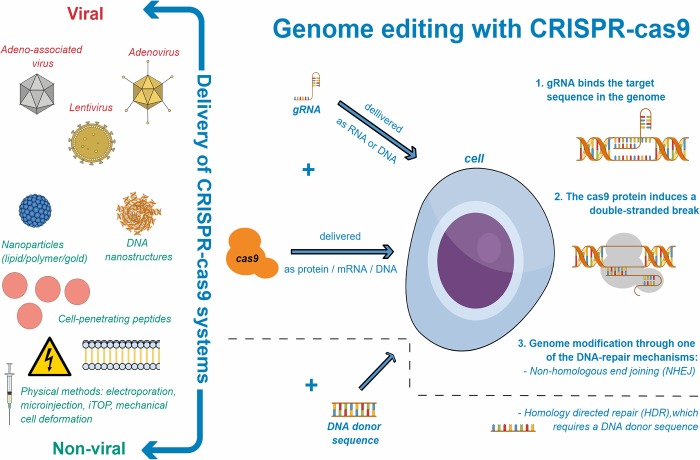Fig 1. Genome editing with CRISPR-cas9.
On the right—schematic depiction of genome-editing with CRISPR-cas. After delivering the CRISPR components, during the G1/S phase of the cell cycle: 1. The gRNA (DNA-binding-domain) binds the target sequence within the genome; 2. This gRNA-DNA complex is specifically recognised by the cas9 protein (the effector domain), which induces a double-stranded break in the DNA; 3. Genome modification occurs, mainly through activating one of the two DNA repair mechanisms: non-homologous end joining (NHEJ) or homology directed repair (HDR). NHEJ introduces insertions or deletions within a sequence, whereas HDR requires delivery of a donor sequence that through recombination with the targeting sequence can lead to point mutations or insertions. On the left–different delivery methods are used to deliver the CRISPR-cas9 components: viral and non-viral. Viral methods are usually more efficient but raise concerns such as immunogenicity.

